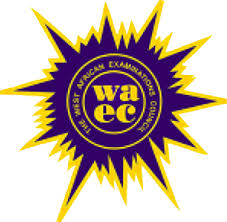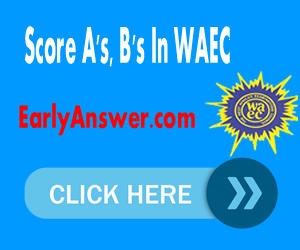WAEC FISHERIES OBJ & THEORY VERIFIED ANSWER

FISHERIES OBJ:
1-10: DDDBDDABDD
11-20: AACCBADACA
21-30: ACBDDBBDAA
31-40: DBCDCADBCB
(1ai)
Fisheries: The science of producing fish and other aquatic resources for the purpose of providing human food, although other aims are possible (such as sport or recreational fishing), or obtaining ornamental fish or fish products such as fish oil.
(1aii)
Fishery: It is an entity engaged in raising or harvesting fish. It involves the species or type of fish, area of water or seabed, method of fishing, class of boats, purpose of the activities or a combination of the foregoing features and peolpe involved.
(1bi)
Area of the pond, A = 2(lb + ld + bd)
A = 2(20×10 + 20×1.5 + 10×1.5)
A = 2(200 + 30 + 15)
A = 2(245)
A = 490 m²
(1bii)
Volume of the pond, V = l×b×h
V = 20×10×1.5
V = 300m³
(1biii)
Number of fish is given by :
= 8 × 490
= 3,920
========================================
(6ai)
Zooplankton are a type of heterotrophic plankton that range from microscopic organisms to large species, such as jellyfish. Zooplankton are found within large bodies of water, including oceans and freshwater systems. They are small floating or weakly swimming organisms that drift with water currents and, with phytoplankton, make up the planktonic food supply upon which almost all oceanic organisms are ultimately dependent
(6aii)
(i)Annelids
(ii)Molluscs
(iii)Worms
(iv)Phytoplankton
(6bi)
(i)Many water resources can potentially be used, including ponds, lakes, strip pits, rivers, and streams.
(ii)Cage culture requires a relatively small financial investment.
(iii)Feeding, sampling, observation, and harvesting are all comparatively simple.
(6bii)
(i)The fish are crowded in cages, and there is a relatively high incidence of disease that can spread rapidly.
(ii)There can be localized poor water quality, such as low dissolved oxygen, in and around cages.
(iii)Caged fish do not have access to natural food, so a nutritionally complete diet is required.
(6ci)
(i)lack of clean water
(ii)Poor nutrition
(iii)dirty environment
(iv)lack of treatment
(6cii)
(I)Hook
(ii)line and sinker.
(iii)Fishing rods
(iv)Fishing reels.
(4a)
Fish marketing channel is the process where by fish starts with the fish farmer, passes through a number of intermediaries and ends with the ultimate consumer.
(4aii)
(i)fish harvester
(ii)local trade
(iii)retailers
(iv)consumers
(4b)
feeding regime is defined primarily by the composition of the basic ration, then by feed supplements and concentrates. In other words is the farm of origin has been confirmed.
(4bii)
(i)Hand feeding
(ii)Demand feeding
(4ci)
-Plant-
(i)beans
(ii)lentils
(iii)Chickpeas
(iv)Peanuts
(v)Almonds
(4cii)
-Animals-
(i)meat
(ii)fish
(iii)poultry
(iv)eggs
(v)dairy
(5ai)
(i) quicklime
(ii) hydrated lime
(iii) limestone
(5aii)
(i) Harmful to fishes
(ii) It reduces rate of fish reproduction
(iii) It can be harmful to man when eaten the affected fish
(iv) It causes water pollution
(5aiii)
(i) Water
(ii) Temperature
(iii) pH
(5aiv)
A fishpond is a controlled pond, artificial lake, or reservoir that is stocked with fish and is used in aquaculture for fish farming, or is used for recreational fishing or for ornamental purposes. It may contain shallow water with marsh and aquatic plants and animals.
(5bi)
Site selection:
(i) Consider the topography
(ii) Consider the soil type
(5bii)
Staking:
(i) Consider the depth of the pond
(ii) Consider the size of the pond
(5biii)
Stripping of topsoil:
(i) Mulching
(ii) improving of oxygen content by addition of freshwater
(5biv)
Dyke construction:
(i) Checkmating the proper location for construction
(ii) Considering the distance to the pond
Categories: WAEC


